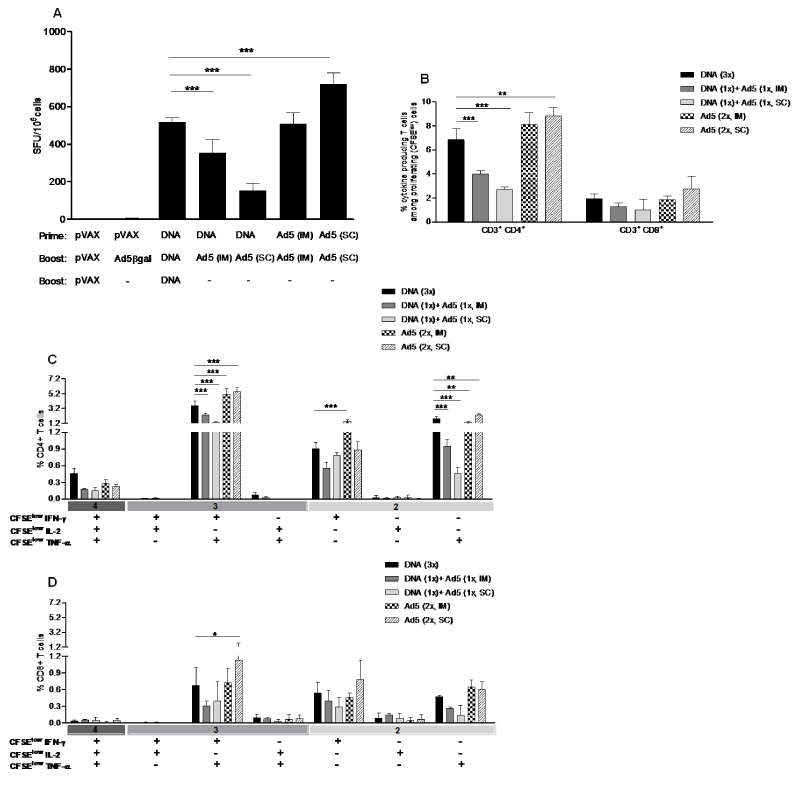
 |
| Figure 2: Immunization with Ad5-HIVBr18 induces higher number of polyfunctional T cells when compared to other regimens. BALB/c mice (6 per group) were immunized as described in Figure 1 and Methods section. Two weeks after the last immunization, splenocytes from each immunized group were pooled and specific immune responses were evaluated in vitro against pooled HIV-1 peptides. (A) Frequencies of IFN-? secreting cells measured by ELISPOT. SFU, spot-forming units. Cutoff: 15 SFU/106. (B) Splenocytes were labeled with CFSE (1.25 ÁM) and cultured for 4 days in the presence of pooled HIV-1 peptides or medium only. On day 4, cells were pulsed for 12 hours with pooled peptides in the presence of costimulatory antibody and Brefeldin A. Cells were then surface stained with antibodies to CD4 and CD8, permeabilized and stained for intracellular cytokines (IFN-?, TNF-a and IL-2) and CD3. Total frequencies of proliferating (CFSElow) and cytokine-producing CD4+ and CD8+ T cells are shown. (C) and (D) After gating on proliferating (CFSElow) and cytokine-producing cells, Boolean combinations were created using FlowJo software to determine the frequency of each response based on all possible combinations of cytokine expression among proliferating T cells. Splenocytes from control groups (pVAX1 and/or Ad5- ▀gal) presented negligible numbers of IFN-? secreting cells and proliferating-cytokine producing cells. Only significant differences with the DNA immunized group are depicted (*p<0.05, **p<0.01 and ***p<0.001). DNA= HIVBr18; Ad5= adenovirus 5 encoding HIVBr18. |